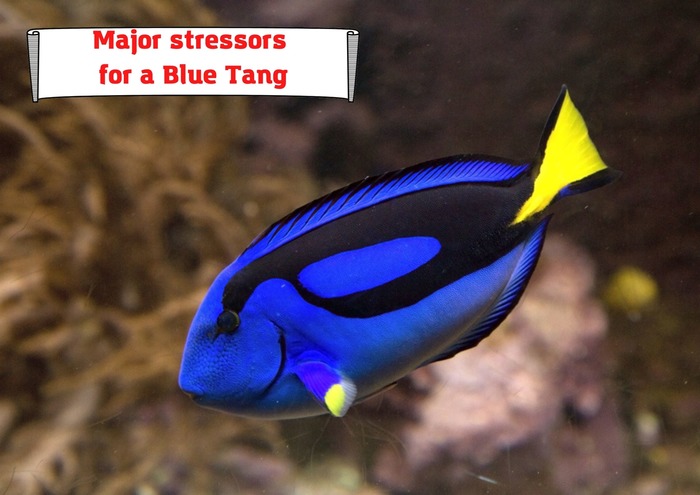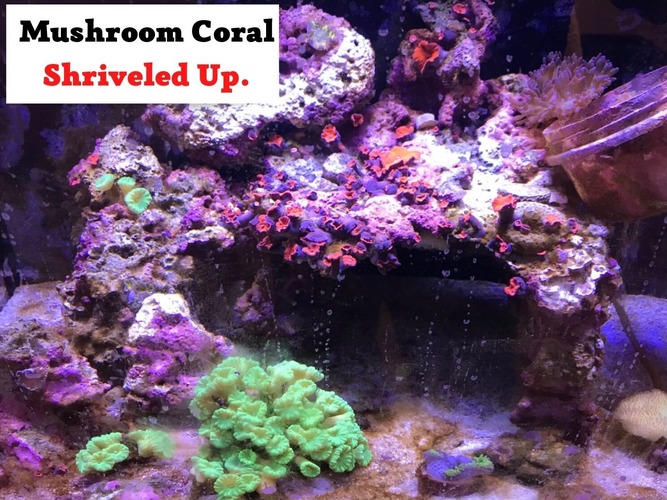
Fish in the aquarium are often prone to stress. Mostly it is the transportation phase that creates a severe stress element in most fish species. Like the other species, Blue Tang can get into extreme stress. You cannot let your beautiful pet worry about the things you can manage.
So, you must find out the stress spots for your Blue Tang and take measures to reduce the overall problems for the little creatures.
Blue Tang is a blue-colored beautiful little marine water fish that is quite famous amongst aquarium owners. It can grow up to 30 cm. with small scales and a pointed snout-like mouth; watching this fish in an aquarium is a wonderful sight. So, you are just making the right choice with your aim of keeping it in your aquarium too.
In this article, we’ll help you review the major stressors that you must avoid, particularly covering:
- Signs to know your Blue Tang is stressed
- Major stressors
- Things you can do to mitigate the stressors
How can you know that your Blue Tang is stressed?
Blue Tang has spines on both sides. When your fish is under stress, you can see these spines extended from the body. Do not take them lightly, as they can cut your skin. Besides, the quick thrashing movement of the tail can also indicate that your Blue Tang is under stress, and you have to do something about it immediately.
Moreover, the white spots on the body are something that we all know is a sign of stress in every fish.
If you want to look for some other stress signs, then looking for the situation when your Blue Tang is gasping on the surface shows that it cannot find enough oxygen under the water. It can either be because your fish cannot take it or your system doesn’t have enough of it. In either case, it is a stressor for your fish, and you can see it when your fish gasps outside the water for more oxygen.
A stressful Blue Tang will not eat properly. Experts claim they when a fish is stressed, it leaves all the food behind. So, if you see such a sign, you can start thinking about the factors that could be giving your fish a tough time in the aquarium.
Furthermore, odd swimming patterns also show that your fish is not normal and might be stressed out for any reason. By odd swimming patterns, we mean crashing at the bottom of the tank or getting into gravel and stones. This is not normal, and you must be vigilant about it.
Major stressors for a Blue Tang

Before we start, we’d like to share that while dealing with the white spots in your fish, you must be vigilant about the right time to act. If you induce medicines at an early stage when your fish has a minor illness or stress factor, it can result in further stress for the fish, and the result can be disastrous. However, if you wait long enough, the disease might not remain treatable. So, watch for all the signs and then judge the right time to take action.
Shifting to a new tank
One of the obvious causes your Blue Tang can feel the stress is the changes in the environment. If you have purchased your fish recently from a shop or had it directly from the source, they’ll feel the transportation going on and the changes in the environment. Once they realize the change, they get into some severe stress.
Usually, the fish quarantine is recommended for this purpose so that your fish can adjust to the new setting. At the same time, you can analyze any severe risks associated with it.
Water Quality
One of the primary reasons for putting your Blue Tang under stress is the poor water quality. If you do not maintain the optimal levels of nutrients, pH, and temperature in the water, your Tang will feel it, and that is going to be really quick. You can consider it one of the disadvantages of having the Blue Tang in your tank.
To maintain the optimal water quality, you do not only have to look for the water you pour in; the aquarium’s decoration, other species, filtration system, and your cleaning habits impact the water quality, which the Blue Tang can easily observe.
Overstocked Tank
You might be keen on keeping as many fish as you can in your aquarium. But you must be very careful about the fish species you keep with Blue Tang. They can be easily bullied by the other fish species, which can pose higher stress on their bodies, and you can even see it from the white spots developing on their bodies.
In some cases, your tank size might not be big enough to allow the fish to swim around freely. It can also be a cause of stress for it. In this case, the tank doesn’t have to be overcrowded, it is just the lack of space, and there can be multiple reasons.
Besides, the waste in a tank will increase with a higher number of species in a single tank. This will influence the water quality and your sensitive Blue Tang.
Lack of food
How do you expect a starving fish to respond? Obviously stressed. If there is not enough food in the tank to keep your fish full all the time, they might get under stress. Well, lack of food can bring anyone in stress, so you must not feel weird, at least about this factor of stress creation.
Nothing to play
Apart from jokes, decoration is a part of the essentials to keep your fish happy, but you have to keep it clean. If you have a simple aquarium where you are just dealing with your fish and water, probably to maintain the exceptional hygiene levels, even then, your Blue Tangs can feel lonely. They love playing around with the decoration, hiding, and swimming back and forth between the plants. So, the complete lack of it might not be perceived nicely by them.
Injury
If your Blue Tang has quarreled with the other fish in the tank or has got itself injured from any of the decoration items, then you can expect it to be under stress too. Such a situation can be fatal because your fish is already in a lower protection state, so the combination of stress will lower the immune system considerably; such a situation can lead to the fish’s death.
In most cases, the experts regard the use of garlic or garlic-induced fish food to help enhance the immune system. But as discussed earlier as well, treating your fish in any way might pose additional stress to it.
Summing up
White spots on your Blue Tang are usually an indication of the stress or an illness. You do not have to treat them every time because your treatment can be considered a stressor by your pet. They can recover on their own. However, in some cases inducing external medication is the only option, so you have to be careful when to act and when not to deal with such a situation.
- Pleco Not Eating. Main Reasons Your Pleco Is Starving - February 21, 2022
- Foxface Fish Sting: Any Danger? And What To Do To Relieve Pain? - February 20, 2022
- White Stuff Coming Out Of Snail – Dangerous? Should You Worry About It? - February 19, 2022




